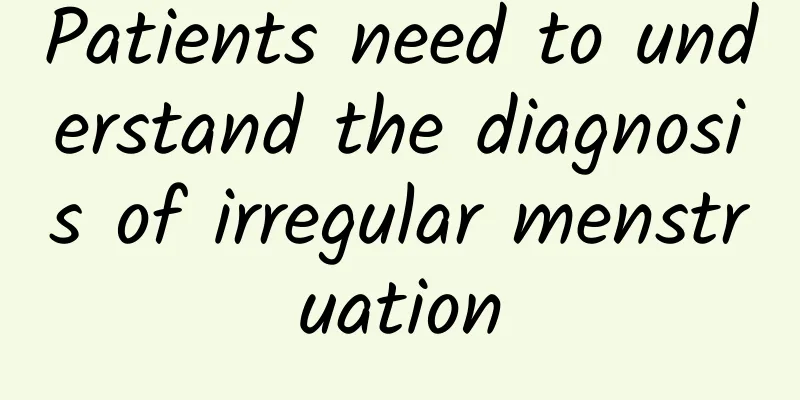What vegetables are good for patients with hyperprolactinemia?

|
Friends with hyperprolactinemia must pay attention to their diet in order to recover better. Especially before surgery, special attention should be paid to the diet. So, what vegetables are good for patients with hyperprolactinemia? Next, let's take a look at what vegetables are good for patients with hyperprolactinemia. 1. You can eat more foods like seahorses, crabs, oysters, kelp and agar-agar, etc. 2. Eat more foods that enhance immunity, such as asparagus, dates, onions, pumpkin, leeks and coix seeds, etc. 3. Avoid hot, spicy and irritating foods. If the food is hot and dry in nature, it will easily generate heat and fire after eating, making the symptoms more serious. 4. Avoid hot and greasy foods. 5. Avoid eating foods that may cause irritation, such as dog meat, mutton, and crabs. Hyperprolactinemia diet therapy Peach kernel and cuttlefish soup: remove the internal organs of a cuttlefish, add 6 grams of peach kernels and 400 ml of water and cook until the fish is cooked. Eat the fish and drink the soup, once a day. Function: promote blood circulation and remove blood stasis. Indications: Hyperprolactinemia of blood stasis type; symptoms include menstrual disorders, or early menstruation, or menorrhagia, or continuous metrorrhagia, or amenorrhea, infertility, galactorrhea, chest and flank distension and pain, irritability, premenstrual breast or lower abdominal pain that refuses to be pressed, back pain, dark red menstrual blood, and many blood clots. Motherwort and black beans decoction: 30g of motherwort and 60g of black beans are decocted in 500ml of water to extract juice, and then brown sugar and rice wine are added. Take twice a day. Function: promoting qi and activating blood circulation. Indications: hyperprolactinemia of qi stagnation and blood stasis type; symptoms include menstrual disorders, or early menstruation, or menorrhagia, or continuous metrorrhagia, or amenorrhea, infertility, galactorrhea, chest and flank distension and pain, irritability, premenstrual breast or lower abdominal pain that refuses to be pressed, back pain, dark red menstrual blood, and many blood clots. |
<<: Hyperprolactinemia treatment method
>>: Dietary considerations before surgery for hyperprolactinemia
Recommend
What examinations do patients with cervicitis need to take? Daily precautions for women with cervicitis
Cervicitis is an internal vaginal disease. It is ...
Can threatened abortion be cured by traditional Chinese medicine?
Traditional Chinese medicine is our country's...
Will banning American beef lead to lawsuits? Department of Health: Clenbuterol is not applicable
In order to defend the safety of the lean meat st...
What tests should be done to find out the causes of threatened miscarriage?
Threatened miscarriage may be caused by a variety...
What to do if adenomyosis causes bleeding similar to menstruation after pregnancy
Is bleeding after pregnancy due to adenomyosis si...
How to prevent cervical precancerous lesions in winter
How to prevent cervical precancerous lesions more...
How to use medication in early stage of threatened abortion
The full liberalization of the two-child policy h...
Adenomyosis, the abdomen has become hard, what is going on
Because the relevant knowledge of the disease is ...
What are the benefits of eating oatmeal for uterine fibroids? Is it good to eat oatmeal for uterine fibroids?
Uterine fibroids are a common benign tumor in gyn...
When is the best time to have an abortion?
Commonly used early abortion surgeries include va...
Can B-ultrasound detect inflammation of the uterus after miscarriage?
Can B-ultrasound detect inflammation of the uteru...
Move your body! 7-day detox and weight loss is so simple
Schedule light exercise, avoid meat-based meals, ...
How to scientifically treat cervical warts
Everyone knows that cervical warts are a relative...
Can amenorrhea be checked for six sex hormones?
Amenorrhea can be checked by six sex hormones, wh...
What foods should not be eaten during threatened abortion
Threatened abortion is a risky abortion. Pregnant...









